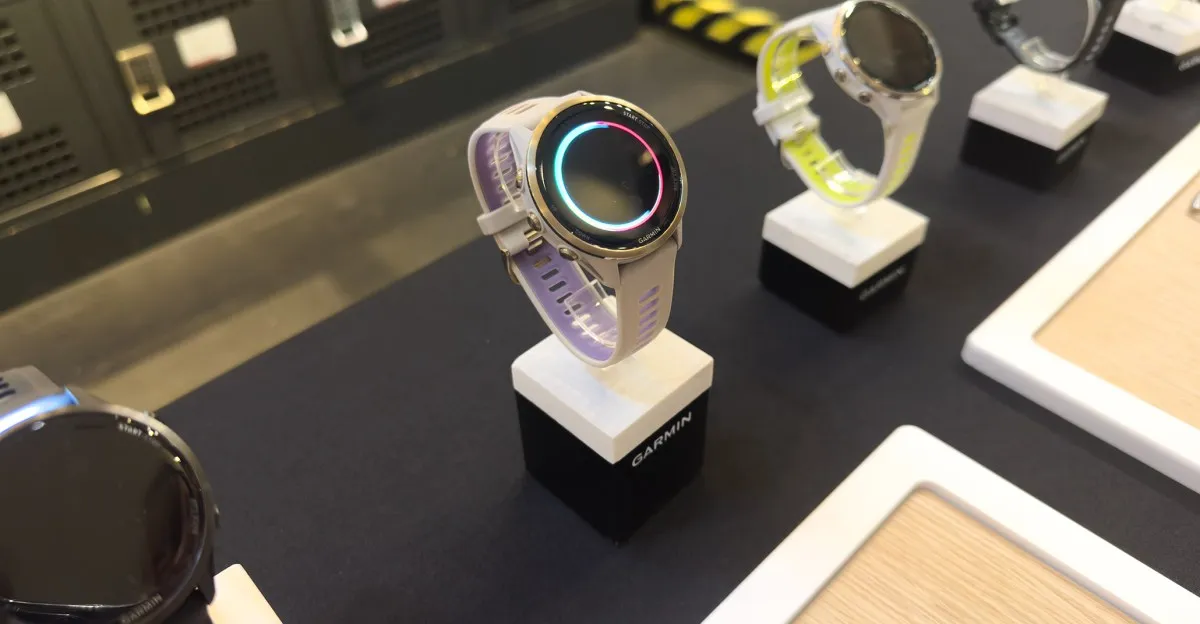
Garmin has made a significant return to the running scene with an exciting lineup of products designed specifically for runners. This latest collection includes two innovative Forerunner watches, a new advanced chest strap, and a suite of features tailored for both runners and triathletes. Notably, these enhancements will remain accessible without the barrier of a subscription fee, despite the recent launch of the Garmin Connect Plus service.
The flagship model in Garmin's new lineup is the $749.99 Forerunner 970, which takes the place of the 965 as the premier running watch. This advanced device includes features like offline maps, making it a powerful companion for serious runners. Complementing the 970 is the $549.99 Forerunner 570, a mid-range option that provides a slight upgrade over the more budget-friendly Forerunner 265, although it does not offer offline maps.
Both the Forerunner 570 and 970 share several key features that enhance the user experience. Each watch is equipped with a built-in speaker and microphone, allowing users to take calls conveniently while on the move. They also boast vibrant OLED displays and skin temperature sensors, along with a new evening report feature that summarizes sleep needs and outlines upcoming workouts and events, including weather forecasts.
In terms of design, Garmin is introducing bold new color options along with eye-catching translucent bands. During the launch event, the color combinations were particularly striking compared to previous models. However, for those who prefer a subtler aesthetic, low-key options are also available.
On the software side, both models are compatible with the free Garmin Coach program, which includes triathlon training, and allow for the creation of custom multisport workouts. For instance, a user can log a run to the gym, a strength workout, and a walk home as a single activity entry. Additionally, Garmin has introduced several race-specific features, such as a projected race time predictor and automatic lap logging when crossing designated course points.
When it comes to hardware, the differences between the Forerunner 570 and 970 become apparent. The mid-range 570 is available in two sizes, 42mm and 47mm, and features an aluminum bezel. In contrast, the flagship 970 is offered only in a 47mm size but comes with a premium titanium bezel and a durable sapphire lens. Furthermore, the Forerunner 970 includes a built-in LED flashlight and is compatible with Garmin's EKG app for atrial fibrillation detection.
Battery life is another critical aspect where these devices differ. The 42mm Forerunner 570 boasts up to 10 days of battery life, while the 47mm version lasts up to 11 days. The Forerunner 970, as the flagship model, excels with a battery life of up to 15 days. Additionally, the 970 offers exclusive running metrics that provide deeper insights into performance. These metrics include running tolerance, running economy, and step speed loss.
Running tolerance is designed to help runners manage their weekly mileage intelligently, providing recommendations on whether to increase or decrease their running volume to avoid injury. Running economy measures energy levels after multiple runs, while step speed loss evaluates how a runner's speed diminishes with each foot strike. However, to access the latter two metrics, users will need to purchase the $169.99 HRM 600 chest strap, as these metrics rely on heart rate data that is not captured by wrist-based sensors.
In addition to running dynamics, the HRM 600 chest strap offers activity recording capabilities for team sports and other activities not suited for smartwatches. This device features a rechargeable battery that lasts up to two months on a single charge and includes LED indicators to alert users when the device is active or when the battery is running low.
Both the Garmin Forerunner 570 and 970, along with the HRM 600 chest strap, will be available for order starting May 21st, allowing runners to take advantage of these cutting-edge tools to enhance their training and performance.